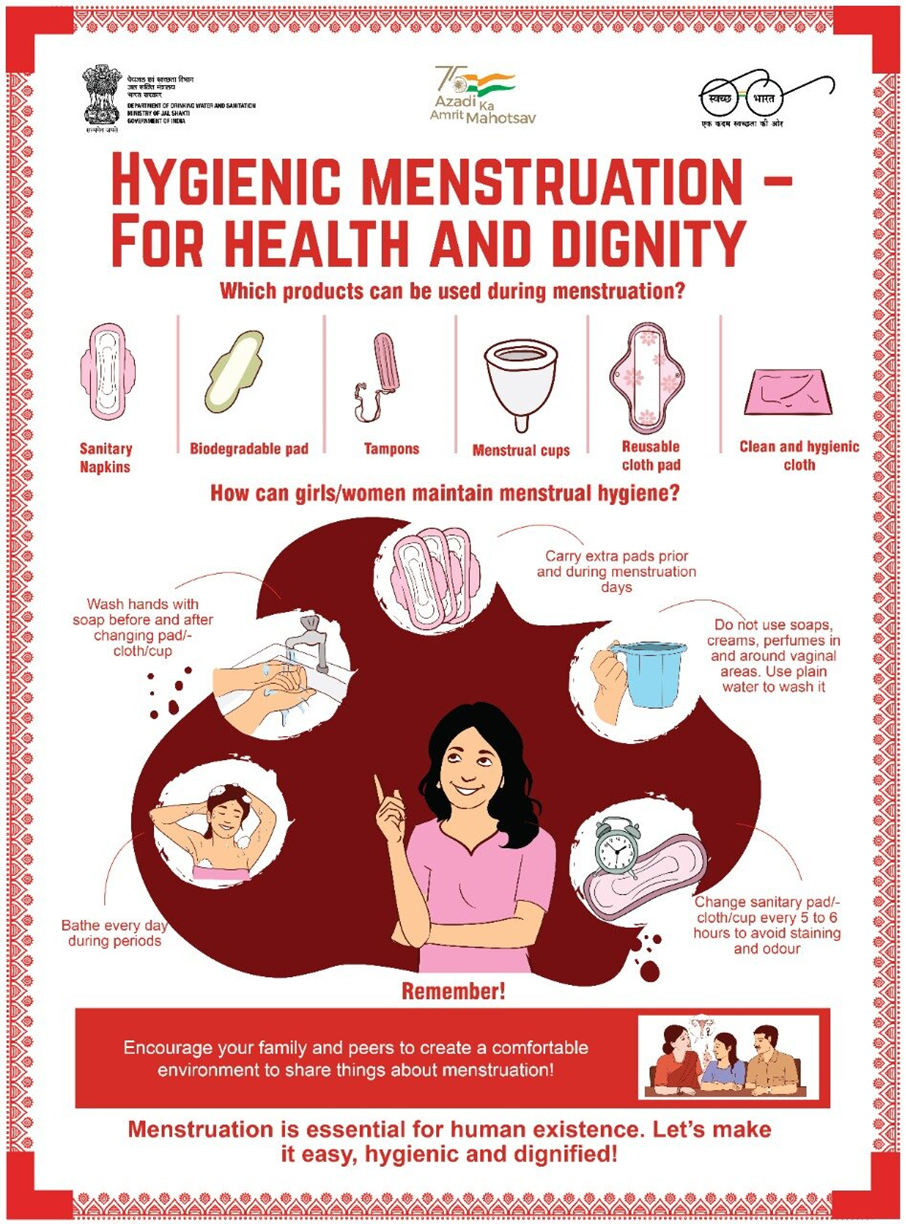“NAVIGATING MENSTRUAL EQUITY: CHALLENGES AND SOLUTIONS”
Syllabus:
- GS-2-Health and wellbeing ,Women issues and solutions
Focus :
- The article explores global efforts for menstrual equity, highlighting tax-free initiatives and challenges in India.
- It addresses socio-cultural barriers, government schemes, and the impact of COVID-19, emphasizing the need for comprehensive solutions to promote menstrual equity.
Introduction
- Recent global efforts have aimed at achieving menstrual equity, particularly through the elimination of taxes on feminine hygiene products.
- Despite tax-free initiatives, approximately 500 million individuals worldwide still face period poverty, highlighting the need for a comprehensive approach.
Tax-Free Initiatives: A Global Perspective
- Kenya led the way in 2004 by eliminating Value Added Tax (VAT) on sanitary products, followed by 17 other countries, including
- The rationale behind tax exemptions was to reduce prices and enhance accessibility, but real-world outcomes varied significantly.
Case Studies on Tax Exemptions
- Australia: Removal of GST led to reduced consumer costs due to a robust legal framework in the retail sector.
- Tanzania: VAT exemptions didn’t result in significant price reductions due to a large portion of product sales occurring in small shops with price variations.
- India and Bangladesh: Experienced inconsistent or no reductions in prices despite tax abolishment.
Source- UN
Challenges in India: Persistent Issues
- GST exemptions in India lowered prices but posed economic viability challenges for local manufacturers.
- Lack of menstrual education among adolescent girls contributes to accessibility issues.
- Regional disparities exacerbate the problem, with rural areas facing more significant challenges than urban areas.
About Period Poverty :
India’s steps–
|
Socio-Cultural Barriers: Addressing Stigma
- Deep-rooted socio-cultural beliefs associating menstruation with impurity hinder open conversations, particularly between mothers and daughters.
- 70% of mothers consider menstruation ‘dirty,’ impacting menstrual education and awareness.
Impact of COVID-19 on Menstrual Equity
- The pandemic exacerbated menstrual inequity, with a significant reduction in the consumption of safe period products, especially in areas with strict quarantine measures.
- Rural areas witnessed a more substantial decline in product consumption, highlighting the disproportionate impact.
Consequences of Menstrual Inequity
- Despite some progress, around half of Indian women still use unsafe menstrual management methods, posing health risks.
- Increased use of hygienic practices but continued reliance on unsafe methods indicate the persistence of challenges.
Steps Suggested :
- Promotion of Menstrual Cups:
- Menstrual cups offer cost-effective, sustainable, and eco-friendly alternatives to sanitary napkins.
- Despite their benefits, they face skepticism and require increased promotion and education.
- Telemedicine Services for Menstrual Health:
- Telemedicine platforms enable remote access to specialized healthcare professionals.
- Video consultations provide personalized guidance and support for menstrual hygiene, overcoming geographical barriers.
- Community-Based Peer Education Programs:
- Innovative peer education programs engage local communities to combat stigma surrounding menstruation.
- Women and girls are trained as menstrual hygiene ambassadors to promote awareness and education.
- Robust Waste Disposal Solutions:
- Safe disposal of sanitary napkins faces challenges and misconceptions.
- IoT technology can facilitate smart toilets equipped with sensors for detecting and disposing of menstrual waste efficiently.
- Construction of Smart Toilets:
- Smart toilets offer real-time feedback on hygiene practices and monitor menstrual product supply levels.
- They can send alerts for maintenance and restocking, improving menstrual hygiene infrastructure.
- Awareness Campaigns:
- Initiatives like mobile apps, interactive websites, and voice-based information systems disseminate culturally appropriate information on menstrual health.
- Augmented Reality (AR) and Virtual Reality (VR) technologies create immersive learning experiences for menstrual health education.
- Utilization of AR and VR Technologies:
- Virtual simulations and scenarios teach proper hygiene practices and address myths and misconceptions surrounding menstruation.
- AR and VR enhance engagement and understanding, contributing to improved menstrual health outcomes.
Conclusion:
- Achieving menstrual equity requires a multifaceted approach, including making menstrual hygiene products more accessible and affordable.
- Breaking the silence surrounding menstruation and addressing socio-cultural barriers are crucial steps towards achieving lasting change.
- Example –Scotland has achieved a historic milestone by enacting the Period Products Act, making it the first nation to legally ensure free access to period products for all individuals.
Source:Business Line
Mains Practice Question :
GS-3
“Discuss the challenges and initiatives in achieving menstrual equity, with a focus on India. What are the socio-cultural barriers contributing to menstrual inequity, and how can they be addressed.” (250 words)




